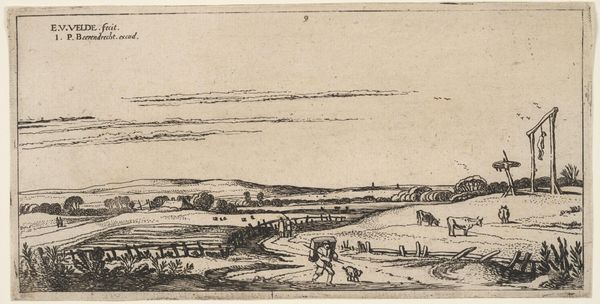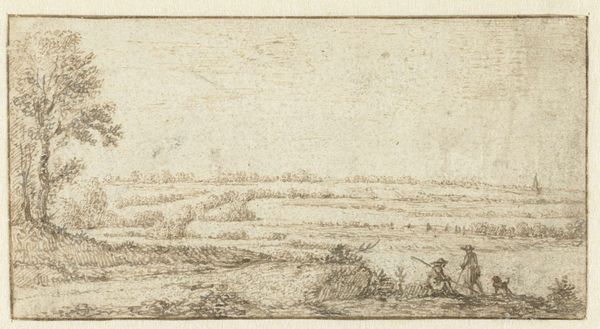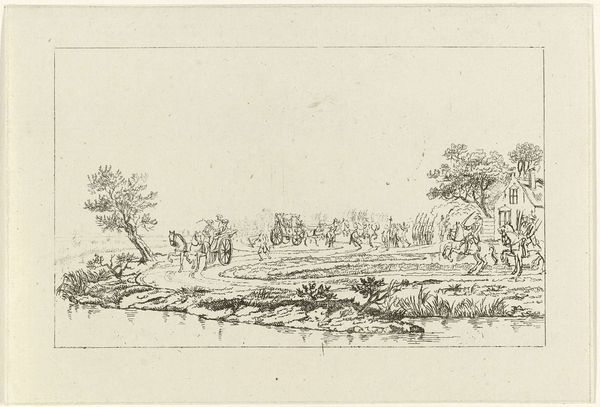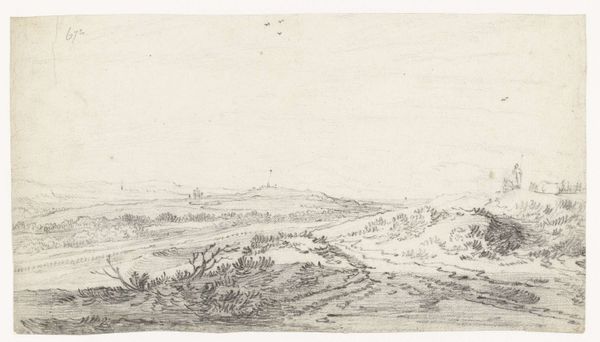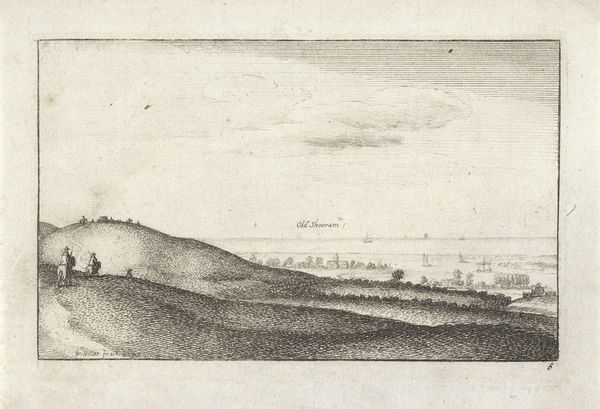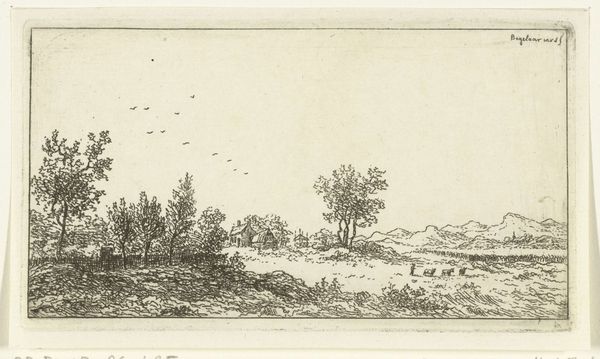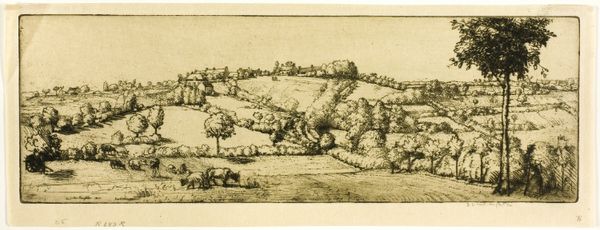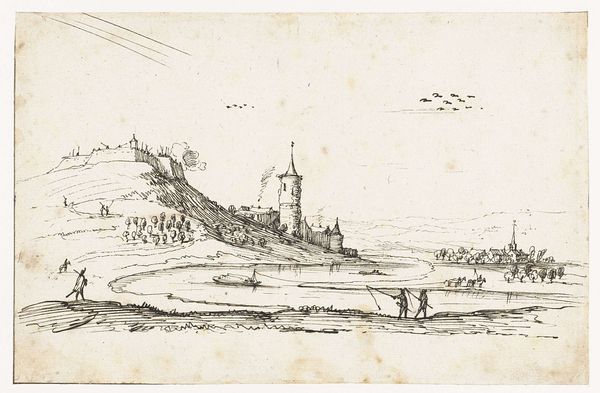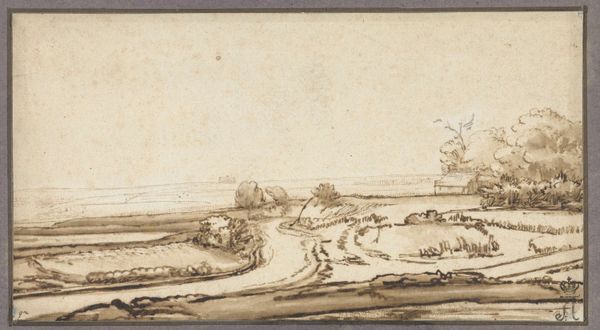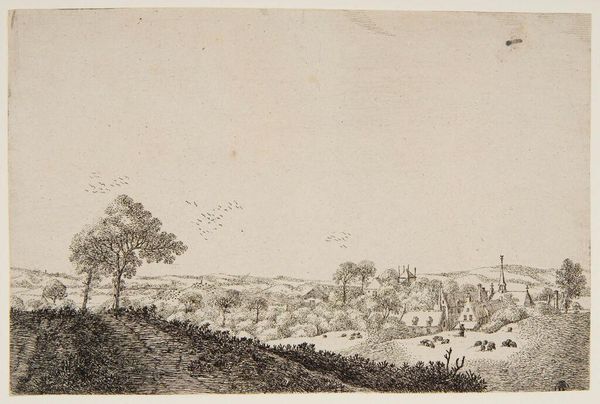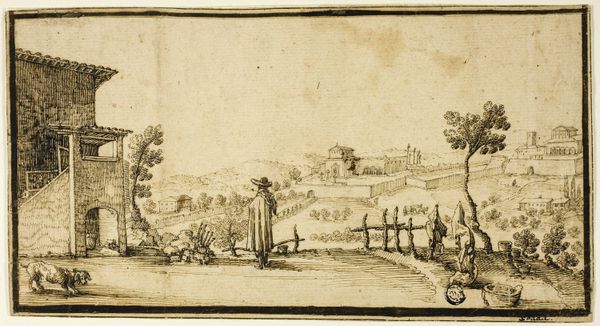
drawing, print, etching, paper, ink
#
drawing
#
dutch-golden-age
# print
#
etching
#
landscape
#
paper
#
ink
#
realism
Dimensions: height 88 mm, width 174 mm
Copyright: Rijks Museum: Open Domain
Curator: Esaias van de Velde’s "Landscape with Gallows Field near Haarlem," dating back to around 1615, uses etching and ink on paper. You get a certain bleakness, don't you? Editor: Utterly. It’s a world sketched in shades of consequence. The gallows dominate the composition, creating an undeniable focal point that chills the whole pastoral vibe, if I can say that? Curator: Well, consider how these "landscapes" were being consumed back then. Prints democratized art. This piece would have circulated, a consumable image produced using accessible etching techniques. We see Van de Velde using readily available paper and ink to translate the landscape, while perhaps offering social commentary. Editor: So, it is not only aesthetic, but practical… Hmmm, the material making the statement accessible while delivering its unsettling punch. The more I gaze into it, I can't shake off a palpable feeling of somber desolation, especially contrasting with the roaming cattle. Is that small cluster meant to be a village in the back? It makes the space both familiar, lived-in and disturbingly indifferent at the same time. Curator: Indifference, as a condition of everyday life? The presence of death amidst normalcy surely points to a perspective on justice, power, and the state’s relationship with its people. Van de Velde presents this vision by cleverly utilizing readily available materials. Think of the socio-economic conditions allowing production for art-market… it tells a richer story, no? Editor: I would agree. The starkness, the raw execution – I find that lends it a brutal authenticity. Even now, I have visceral reaction to it, it doesn't allow escaping reality, a rather pointed mirror on life’s fragility. I mean… for all the “pastoral”, the artist isn’t trying to prettify it here. Curator: Exactly, it’s not pretty, nor particularly moralistic, just brutally… available. Thinking of its production process lets one appreciate that more. Editor: Looking at it with fresh ears, that everyday scene tinged with a grim monumentality... Makes you reconsider our perception of landscape and power! Thanks!
Comments
No comments
Be the first to comment and join the conversation on the ultimate creative platform.
